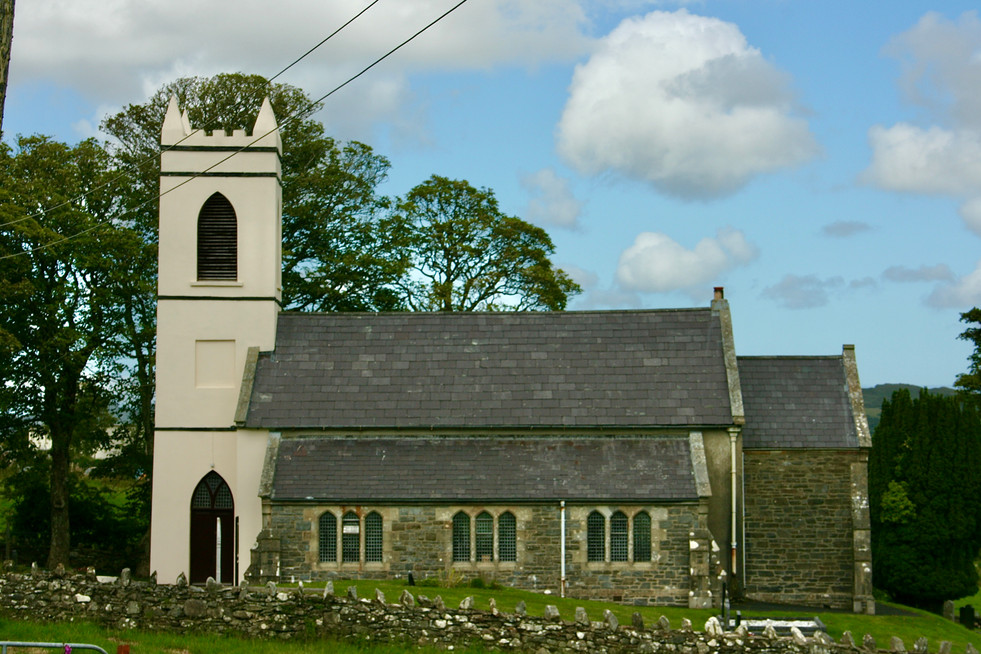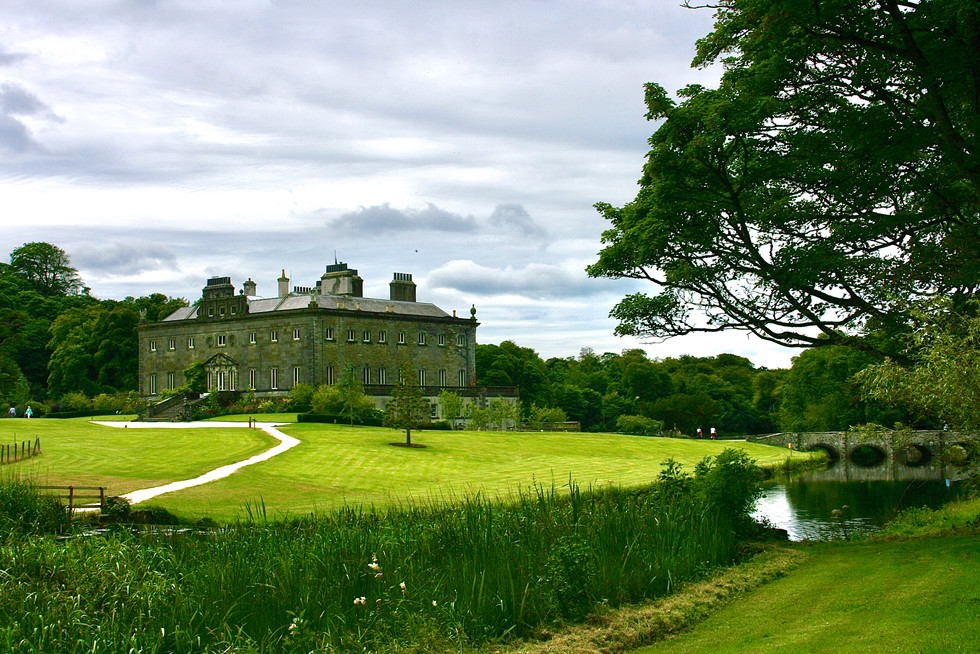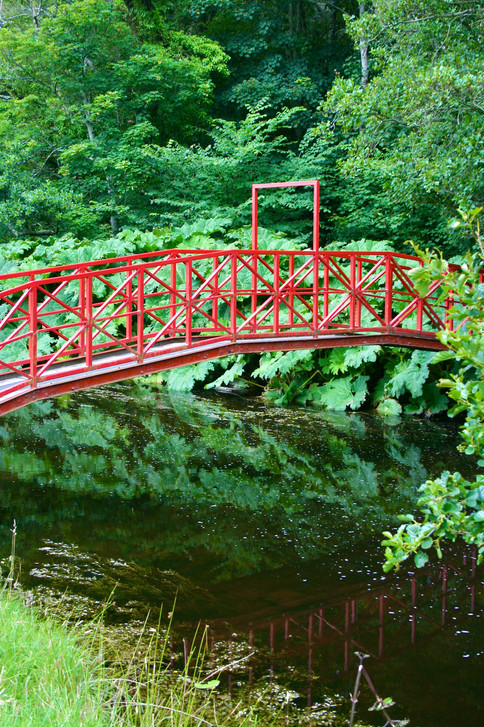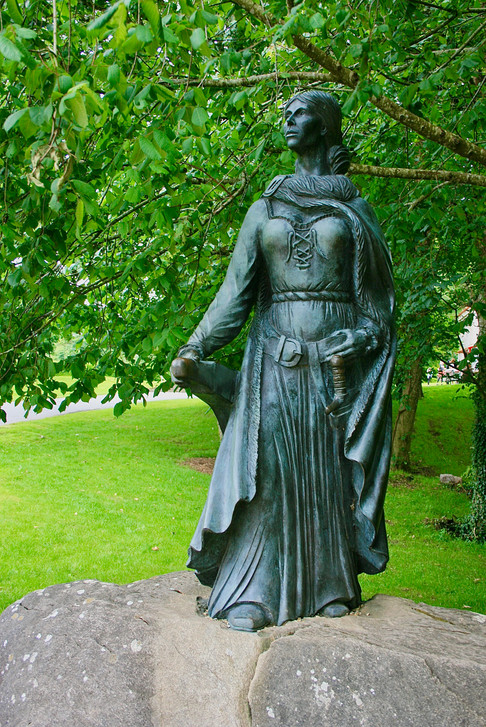Westport, the best place to live in the entire country...
- Fiona
- Sep 5, 2020
- 7 min read
Updated: Oct 28, 2020

We left Malin Head and the Northern Heads of the Wild Atlantic Way and made our way south through the counties of Donegal, Leitrim and Sligo. We decided to by-pass the surf coastal section of the Wild Atlantic way but we reconnected with it when we reached the Bay coast, at Westport in County Mayo.
During this part of our journey we took a wrong turn when exiting Letterkenny which meant that we got to see more of the beautiful Irish countryside than we had planned including the very small, very cute and very Irish town of Church Hill.
1-2 Vibrant green countryside vistas from the garden next to the church
3-4 St Columbas Church of Ireland, Church Hill, Co. Donegal
5-6 Wilkens bar at Church Hill
8 McClafferty's Funeral Directors/Bar and Lounge - we found this combination quite amusing and as we travelled around Ireland we found that it wasn't at all unusual! We wondered which had come first - was it initally a bar that then created a demand...then siezed upon by the entrepreneurial Mr and Mrs McClafferty or had the McClaffertys acted with considerable foresight and set up both businesses together? Our hypothesis? In true Irish style it simply makes perfect sense to have a bar and a funeral directors co-located!!
7 So... along the lines of the funeral directors/bar and lounge combination why do you think the funeral directors and taxi service is combined? We'd love to hear your ideas on this in the comments field below
.
Westport
A beautiful planned town (planned and built in the 18th century - more on this below) that in 2012 was voted the best place to live in the entire country (courtesy of a competition organised by the national newspaper The Irish Times)!
We arrived in Westport in the evening of the 20th of July and found it to be a vibrant and colourful town that was bustling with mostly Irish visitors ('staycationers'). We had chosen Westport to be our base to explore the region over the following four days. Normally we stay in towns or cities but this time we had chosen to stay in a lovely Airbnb on the outskirts of the town, with fabulous rural views and a great outdoor garden to relax in with a glass of wine and a good book.
On the first evening, we wandered into the town to try and find somewhere for dinner, which should have been an easy task but as it was peak tourist season, the town was packed and almost all the restaurants were booked out with some very average looking places fully booked for the next two days. We continued to look for somewhere to eat, exploring small back alleyways when we discovered Arnos, which was rather special with French style cuisine in a stylish intimate dining space! And best of all they had a table for us... https://arnosbistrot.com
After dinner, we spent the rest of the evening exploring the town - admiring the cafes and pubs located in vibrantly coloured buildings; and the beautiful hanging flower baskets that were everywhere including on the stone bridges that span the Carrowbeg River.
Images
1 Arno's Bistro - more on Arno's at https://www.gypsiesinourfifties.com/ireland
2-4 Stone bridges over the Carrowbeg River
5-10,12 Brightly coloured cafes, bars, restaurants and hotels
11 Stunning flower displays
13-14 Our Airbnb - in sunshine and in rain
15-17 The road to our digs and the view from or bedroom window
Westport House
Our second day in Westport, the sun was still shining and so we stayed in town and visited Westport House. A rather grand building that was designed and built in the 18th century. Originally, it literally had the town on its door step (actually on what is now the front lawn of the house). It was a little too close for the owners, the Browne Family, who in 1780 commissioned James Wyatt to plan a new Westport Town to be located slightly further away from their house!! Wyatt's plan included buildings in the Georgian architecture style as well as a tree-lined river (he even recommended re-routing the Carrowbeg River to perfect the presentation). And so the town was moved and Westport House claimed the land that it had been on to landscape a new front lawn. The house is now surrounded by parkland grounds with a lake, terraces, gardens and views overlooking Clew Bay, the Atlantic Ocean, Achill, Clare Island and Ireland's Holy Mountain, Croagh Patrick.
A Pirate Queen
As noted above it was built and is still privately owned by the Browne family, who are direct descendants of the 16th century Pirate Queen, Grace O’Malley.
Grace O’Malley, or Gráinne Ní Mháille, was a famous Pirate and “Queen of Connacht” one of the ‘four proud provinces of Ireland’. She was chief of the O’Malley clan and ruled the seas around County Mayo for forty years, where she and her crew ruthlessly terrorised ships trading in Galway Bay, taxing all those who fished off their coasts, and looting those that didn’t pay their taxes. They traded with some coastal areas of France and Spain and built a row of castles facing the sea to protect their territory.
Grace O’Malley had several castles in the west of Ireland, and it was on the foundations of one of these that Westport House was actually built. There is still an area of her original Castle in the basement of the House (now known as the Dungeons) which visitors are able to view. A bronze statue of Grace O’Malley is situated on the Westport House grounds
The National Museum of Ireland, Country life
On our fourth day in Westport, the rain had set in and so looking for something to do inside we visited the 'Museum of Ireland, Country Life' which is located on the grounds of Turlough Park House a historic home dating to 1865 in Castlebar, County Mayo. The museum houses part of the National Folklife collection with interesting exhibits on the way of life of rural Irish people between 1850 and 1950 - there were displays about the home, the natural environment, trades and crafts, communities, and working on the land and water, about the seasons and the saints days and how they all impacted daily lives. The museum is set in beautiful grounds that we walked in (between showers), and consists of two dominant buildings which where interesting architecturally in the way they were two very different styles sited next to each other. Turlough House built from 1863 to 1867, and a modern museum building constructed in the slope of a hill above a pond that was built in the early 1990s.
Alan and his sister Clare, call each other Tinker as a term of endearment (I think) - and so it was interesting to learn about the Tinkers in rural Ireland. The tinkers were tinsmiths and they were expected and valued visitors to the rural communities. They travelled with their families from place to place on a small cart or wagon that carried their tools, items for sale and personal effects. Sometimes tinkers sold horses or donkeys as well as making and repairing tinware.
’True as God I can do any sort of work at all. I can dig ditches, mend rails, hammer plates and saucepans, lead horses, doctor animals, I can tarmac, sing, dance fiddle, and play a tune on the tin whistle. I can harvest, turn a plate of rashers, lid the saucepan, and fiddle with a motor, build a car, mend a shaft and sell any trinket... To tell you the truth I was never at a wake where they didn’t drink from one of my cups and one of my candles didn’t burn at the beside of the corpse.’ Anonymous, Irish Tinkers by Martina O’Fearadhaigh and Jannie Wiedal
Related to the term Tinker, and because we are gypsiesinourfifties.com we were also interested in learning about Irish ‘Travellers'... often referred to by the terms tinkers, gipsies/gypsies, itinerants, or, pejoratively, they are also referred to as ‘knackers' in Ireland. When I was younger I had a bit of a romantic notion of gypsies and pictured them travelling around in horse-drawn barrel type caravans living a carefree life. These days my perception is probably more realistic thanks to various television programmes and articles in the media, such as those describing an infamous group of tourists in New Zealand in January 2019 - see The Unruly Tourists. We tend to see them as being loud, brash and uncouth, operating scams, stealing and staying on land they do not own. They leave behind rubbish when they move on and they generally cause tensions with the communities in which they stay.
At the museum we learnt that...
Irish Travellers are an ethnic group native to Ireland who have their own culture, language and traditions and they have existed for many hundreds of years (they were officially recognised as an indigenous ethnic minority by Ireland’s government in early March 2017). Theories of their origins include loss of their houses during famine or eviction and the need to travel to find work. Large numbers of Irish Travellers also live in Britain and the United States of America as they emigrated alongside the settled Irish in search of a better life.
On further investigation we also learnt that Irish Travellers are an ethnic minority, that they face discrimination by employers, racism in the workplace and a lack of support in educational achievement and training opportunities which means that there is very high unemployment in the Traveller communities; they also face challenges maintaining good health as it is difficult for Travellers to access medical care, antenatal and postnatal care, mental health support and other services settled people use to keep healthy. With housing for those who want to live in houses or apartments, there ar often problems with landlords discriminating against them. There is also a disproportionately high ratio of Travellers among homeless people. Racism affects Travellers throughout their entire lives. It can cause bullying in schools, refusal to enter into shops, pubs, restaurants, hotels and gyms. If a Traveller funeral is held in a town, it is common for shops, restaurants and pubs to close down for the day. Negative and exploitative media representation and social media also creates misinformation and misunderstandings about Travellers.
Spunoutout.ie (an Irish non-governmental organisation focused on providing online youth information. The organisation’s stated mission is to “help create an Ireland where young people aged between 16 and 25 are empowered with the information they need to live active, happy, and healthy lives)


























































































Tinker Clare here, Tinker Alan. Some interesting stuff here about tinkers, a clever and industrious bunch! And I remember Westport from back in 1991, walking over that bridge and along the path beside the river after a visit to a pub. Remember it clearly as a lovely and welcoming town, so glad you both enjoyed it too.